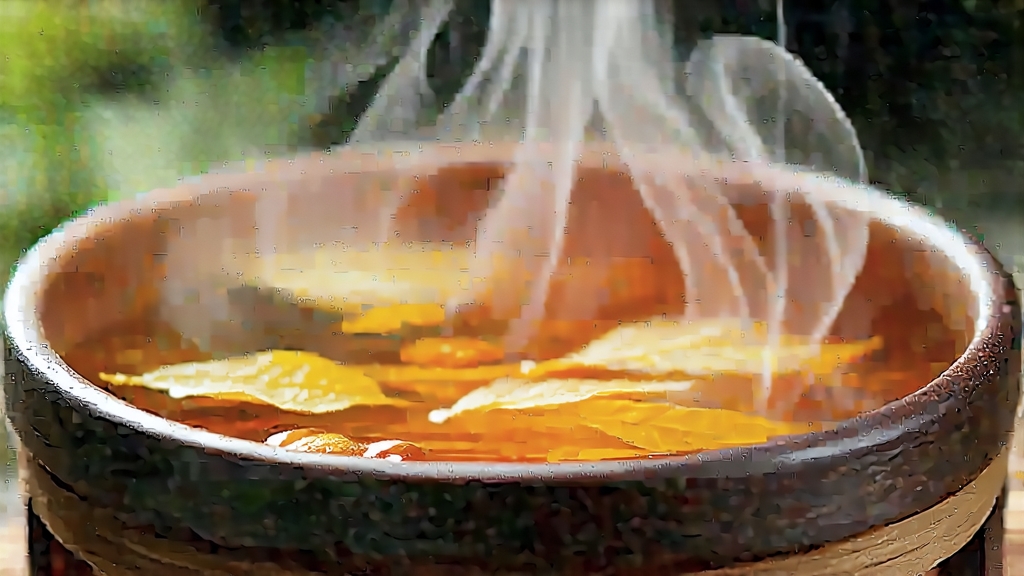
If any tea can be called a living perfume, it is Phoenix Dancong. Grown on the fog-laced slopes of the Phoenix Mountains in northern Guangdong, this oolong family is not a single cultivar but a mosaic of over eighty genetically distinct “fragrance types,” each named after the flower or fruit it magically evokes—honey-orchid, almond, ginger flower, night-blooming jasmine. Unlike the neat hedgerows of modern plantations, Dancong trees stand alone, some exceeding three hundred years of age, their gnarled trunks rising like bonsai candelabras from weathered granite. Every spring, farmers climb bamboo ladders to coax two leaves and a bud from these individual giants, then craft them, lot by lot, into one of China’s most aromatic and sought-after oolongs.
The story begins during the Song dynasty, when imperial exam candidates from the Phoenix region carried small cakes of roasted tea up to the capital. A single infusion stunned the court with its lingering peach-blossom sweetness; the emperor promptly declared it tribute tea. Centuries later, Qing merchants refined the technique of “single-tree processing,” isolating each tree’s harvest to preserve its signature scent. The practice survived wars, market crashes, and the Cultural Revolution because mountain villages treated Dancong as family genealogy: every bride received a dowry of her own tea tree, and every newborn’s placenta was buried beneath its roots to bind life to leaf.
Botanically, Phoenix Dancong belongs to the Camellia sinensis var. sinensis species, yet centuries of sexual reproduction have created a kaleidoscope of local ecotypes. The most prestigious come from elevations between 600 and 1,200 meters, where diurnal temperature swings of 10 °C coax slow growth and volatile terpene accumulation. Old-garden trees develop deep taproots that mine minerals from decomposed granite, lending a stony backbone to the cup. The absence of irrigation forces the plant to stress-synthesize aromatic compounds, the same survival chemistry that gives fine wine its terroir.
Crafting Dancong is a five-day choreography of wilting, bruising, oxidation, fixation, and baking. Picking starts at dawn when dew still weighs the leaf, lowering its temperature and buying the processor precious hours. The leaves are spread on bamboo trays under the morning sun for no more than twenty minutes; direct solar withering triggers a rapid loss of grassy aldehydes and sets the stage for later floral notes. Indoor withering follows, carried out in the upper story of the farmhouse where mountain breezes waft through louvered shutters. Every half hour the tea master gently shakes the trays, coaxing the edges of the leaves to bruise against one another. This micro-damage ruptures cells, allowing polyphenol oxidase to meet catechins and spawn theaflavins that will later translate into honeyed color and orchid fragrance.
Oxidation is arrested in a 260 °C wok for exactly four minutes; one minute less leaves grassy tones, one minute more flattens aroma. The most critical step is charcoal baking, done in the midnight hush when village generators rest. Longan-wood charcoal is buried in ash to maintain a steady 80 °C, and the tea rests in thin layers on perforated bamboo sieves stacked inside a clay oven. Over eight cycles the leaf moisture drops from 8 % to 3 %, while Maillard reactions generate caramel, toasted almond, and sometimes a whisper of whisky. Between each cycle the tea is left to “sleep” for at least a week, allowing internal moisture to migrate outward; this prevents the sourness that plagues rushed productions.
To unlock Dancong’s perfume, the Chaozhou gongfu ritual is non-negotiable. A 120 ml gaiwan, three grams of leaf, and water just off the boil at 98 °C form the golden ratio. The first three infusions last only five seconds—just enough to rinse the leaf and awaken its soul. From the fourth steep onward, add two seconds per infusion; a well-made Dancong will yield twelve rounds before its aria fades. The mountain code says “first infusion aroma, second taste, third feeling,” referring to the progression from scent to flavor to the cooling sensation in the throat known as gan. Connoisseurs listen for the “mountain rhyme,” a lingering mineral echo that arrives thirty seconds after swallowing, like the after-ring of a temple bell.
Tasting notes can be decoded by triangulating fragrance type, texture, and aftertaste. Honey